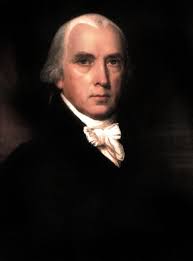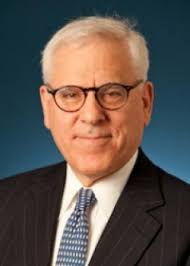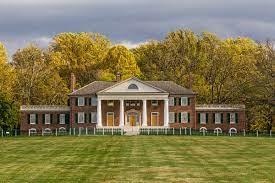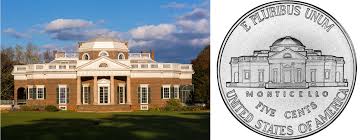Is History for Sale?
He who pays the piper, calls the tune. The same is apparently true for benefactors of historical sites.
Radical leftists such as Robin DiAngelo risibly contend that “American wealth was built on the labor of kidnapped and enslaved Africans and their descendants.” They likewise contend that “We have yet to achieve our founding principle, but any gains we have made thus far have come through identity politics.” In other words, the Left rejects the traditional narrative of the Founding and denies that the ideals underlying the Declaration of Independence and U.S. Constitution have contributed to progress in America. This is a damnable lie, yet constitutes the basis of the 1619 Project and the theme conveyed in many national historical sites.
This essay originally appeared in Law & Liberty, on October 5, 2021 (here). Thanks to Power Line, George Leef at National Review (here), SE Texas Record (here), Real Clear Policy, and Real Clear Public Affairs!
American history is under siege. Howard Zinn’s tendentious tract, A People’s History of the United States, is widely used in the nation’s high schools and colleges, now supplemented by the equally-mendacious 1619 Project. Across the country, streets, schools, and buildings are being renamed; historic statuary, monuments, and plaques are being removed from public spaces; and when not mothballed altogether, symbols of the past—ranging from our founding documents to the Alamo—are being “recontextualized.” Revisionism has rapidly accelerated into wholesale erasure. Many history buffs, wishing to visit the remaining historical sites before they disappear (or are altered beyond recognition), prioritize such visits, while they still stand.

This is precisely what my wife and I did while returning from a recent trip to Washington, D.C.; on the way back to Tennessee, we stopped at the homes of James Madison (Montpelier, in Orange, VA) and Thomas Jefferson (Monticello, in Charlottesville), hoping that they were safe from these baleful trends. Not long ago, when we toured The Hermitage, Andrew Jackson’s home near Nashville, we were pleased by the relative lack of left-wing revisionism. Alas, the same cannot be said of Montpelier (and to a lesser extent Monticello). The likely explanation is huge contributions from progressive philanthropist David Rubenstein, the multi-billionaire co-founder of private-equity powerhouse The Carlyle Group. History is apparently for sale, and Rubenstein’s massive contributions to historic sites have given him great influence over the narratives they propound.

Rubenstein is sometimes described as “nonpartisan,” but this doesn’t mean he is politically (or ideologically) neutral—and neither are the contemporary historians who curate historical sites. In the 1970s Rubenstein was a Democratic staffer on Capitol Hill and a domestic policy advisor in the Carter Administration. His recent charitable contributions focus on “reparative” projects such as cataloging the names and lives of black people who were enslaved (at the Duke University rare book and manuscript library, which is named after Rubenstein), restoring the former slave quarters at Monticello (where the visitor center is named after Rubenstein), donating $10 million toward the building of the Smithsonian Institute’s National Museum of African American History and Culture (along with loaning the museum a rare copy of the Emancipation Proclamation signed by President Lincoln), and donating $10 million to the Montpelier Foundation, which oversees the home of our fourth President.

Rubenstein’s gift to Montpelier, now formally described as “A memorial to James Madison and the Enslaved Community,” illustrates the potential drawbacks of Rubenstein’s “patriotic philanthropy.” His gift to Montpelier is large enough to warrant the visitor center being named after him. This itself is not objectionable; donors’ names routinely adorn facilities they lavish with their money. The concern is influence over the content of the historical narrative. At Montpelier, the self-described “Rubenstein Initiative” financed
a five-year plan to refurnish and interpret the Montpelier mansion and reconstruct the South Yard, the enslaved community site adjacent to the mansion. Rubenstein’s gift has made it possible for Montpelier to offer visitors a more complete version of the story of American liberty, with its equal attention to furnishing and interpreting the home of one of the country’s foremost political thinkers and to telling the story of the enslaved community that lived and worked in his household. (Emphasis added.)
Madison, like many other Founding Fathers (such as George Washington and Thomas Jefferson) was a slave owner. Slavery is now properly regarded as repugnant and immoral, but in the eighteenth century was not so universally condemned. In tobacco-oriented colonies such as Virginia, it was fairly common. Looking back from our perspective in 2021, our view of Madison’s contributions as midwife to the Constitution, co-author of The Federalist Papers, architect of the Bill of Rights, Secretary of State under President Thomas Jefferson, and serving as fourth President of the United States should not ignore the fact that he was a slave owner. The institution of slavery in America is a fact. But is it fair to give “equal attention” to the enslaved community who lived and worked on the plantation at Montpelier? I would submit that this undue emphasis detracts from Madison’s enormous contributions to the nation’s Founding.
The refurbished grounds at Montpelier include a reconstruction of the South Yard, where approximately 300 slaves lived and worked from 1723 to 1844. The goal, according to the official visitor pamphlet, is “to examine the institution of slavery in the Founding Era, celebrate the humanity of Montpelier’s enslaved people, and confront the legacy of slavery in today’s world.” An exhibit called “The Mere Distinction of Colour” seeks to provide “a more complete, holistic American story”—one that explores “how the legacy of slavery impacts today’s conversations about race, identity, and human rights.” The National Trust for Historic Preservation, a private nonprofit unrelated to Rubenstein, which also supports Montpelier, praises the exhibit for explaining “how the legacy of slavery persists today—especially regarding its place in historic retellings.”

I don’t wish to suggest that the institution of slavery is unworthy of study, or that a greater understanding of the lives of enslaved people wouldn’t enrich one’s knowledge of American history. However, at Montpelier the omnipresent topic of slavery tends to diminish the extraordinary accomplishments and legacy of James Madison, which is what attracts most visitors to the former plantation. This outsized emphasis carries over to the presentations made by Montpelier’s docents. On the guided tour my wife and I took, the docent made frequent allusions to the slaves at Montpelier (under James Madison and his ancestors), going so far as to speculate that the three slaves convicted of fatally poisoning Madison’s grandfather, Ambrose, in 1732 were innocent—and even suggesting that Madison’s grandmother may have been to blame!
This is not the consensus view of historians who have studied the incident, but it shows the mischief that can result when historical sites become the subject of competing—even Manichean—narratives. The docent also speculated that some of the enslaved people who worked at Montpelier might have grown up to be doctors but for the evil of chattel slavery—food for thought but hardly the type of jejune commentary visitors come to Madison’s home to hear. (The enslaved people, if freed, more likely would have ended up eking out a living as sharecroppers.) Presumably in the interest of “inclusion,” the exhibits and commentary at Montpelier prominently feature Dolley Madison, even though she did not marry the 43-year-old long-time bachelor (17 years her senior) until 1794, long after the Constitution was drafted and ratified.
Her contributions as First Lady during Madison’s two (tumultuous) terms as President (1809-1817)—which few historians regard as the apogee of his career—do not compare to Madison’s central role in the Founding. At the conclusion of the tour, the docent encouraged us to visit the exhibits at Montpelier (housed in the basement and in the South Yard) focusing on the “lingering institutional disparities that prevent Americans from realizing the ideals expressed in our founding documents,” and “interpretive content that will amplify the stories of Black lives at Montpelier in support of Black Lives Matter.” To top off the disturbing tour, Rubenstein’s namesake visitor center at Montpelier features a whole rack of leftist books, including Robin DiAngelo’s White Fragility, Ibram Kendi’s How to be An Antiracist, and many other titles wholly unrelated to James Madison. The addition of this “context” promotes the Left’s theme—reflected in the 1619 Project and elsewhere–that the nation was founded by overrated white men, and that America was built on the labor of enslaved Africans and their descendants.
My overall impression of Montpelier is that the juxtaposition of slavery and the life of James Madison was intended to tarnish his remarkable achievements while simultaneously promoting the cause of identity politics. The message seemed to be that the Founding Fathers were not heroes, but flawed men who preached about liberty and equality but failed to live up to those principles. Or, even worse, that Madison’s remarkable contributions were no greater than the toil of the enslaved people at Montpelier. This may be familiar grist in a college history class, but did tourists travel from across the country for such a scolding? Do visitors make the pilgrimage to the Baseball Hall of Fame in Cooperstown to hear about the asterisks, errors, and strikeouts?
Historical sites such as Montpelier and Monticello would hold no interest to the general public, and would attract few visitors, except for the consequential deeds of the great statesmen men who once lived there. Accordingly, the focus should remain on the former Presidents and their accomplishments.
The narrative at Monticello was not as heavy-handed as at Montpelier, although the docent began the tour by advising the group as a fact that Thomas Jefferson fathered the children of his enslaved domestic servant, Sally Hemings, even though historians such as Kevin Gutzman describe the much-debated DNA evidence as “not conclusive.” The foundation that maintains Monticello takes the view that “the issue is a settled historical matter.” Rubenstein’s first $10 million donation to Monticello was earmarked in part “to rebuild at least two log buildings on Mulberry Row, where slaves lived and worked, and restore the plantation’s original road scheme.”

A second $10 million donation by Rubenstein “will provide ongoing support for the Mountaintop Project, a multi-year effort to restore Monticello as Jefferson knew it, and to tell the stories of the people—enslaved and free—who lived and worked on the 5,000 acre plantation.” Again, it is a well-known fact that the author of the Declaration of Independence was a slave owner, but does that have to overshadow Jefferson’s tremendous contributions to the Founding? The same preoccupation is apparent at the University of Virginia, established by Jefferson, which now hosts a memorial to the enslaved people who helped build it. Visitors to the iconic Rotunda, conceived by Jefferson as the heart of the “Academical Village” at the University, are now greeted by interpretive wall panels discussing the role of enslaved African Americans in the construction of the campus. Again, the role of enslaved people can and should be recognized, but in a place and manner that does not detract from Jefferson’s legacy.
Slavery happened in America, just as it had throughout recorded history, around the globe (and still exists in some places). It ended here following a bloody, costly Civil War, over 150 years ago. Must all of our Founding Fathers’ accomplishments be forever diminished—even negated—by a preoccupation with this unfortunate aspect of our history? The Founders’ ideals ultimately prevailed, a triumph that warrants celebration, not atonement. America is a great country, possibly the greatest of all time. Her story, fairly told, should instill a sense of pride, not grievance or self-hatred.
History buffs should complete their bucket lists soon. Our past is a fleeting thing.
































